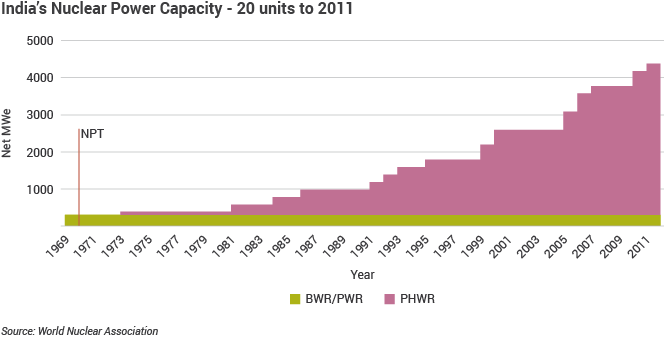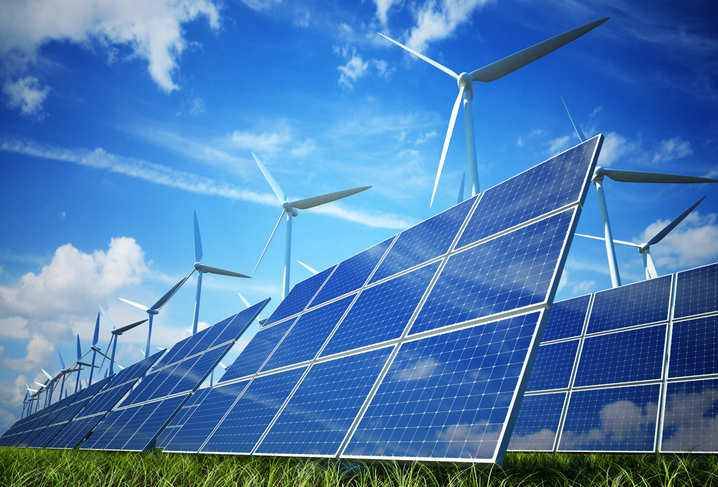
March 21
Nuclear Power in India
India’s primary energy consumption more than doubled between 1990 and 2011 to nearly 25,000 PJ. India's dependence on imported energy resources and the inconsistent reform of the energy sector are challenges to satisfying rising demand. The 2015 edition of BP’s Energy Outlook projected India’s energy production rising by 117% to 2035, while consumption grows by 128%. The country’s energy mix evolves very slowly over the next 22 years with fossil fuels accounting for 87% of demand in 2035, compared with a global average of 81% (down from 92% today). Oil remains the dominant fuel (36%) followed by gas (30%) and coal (21%). CO2 emissions from energy consumption increase by 115%. Electricity demand in India is increasing rapidly, and the 1128 billion kilowatt hours (TWh) gross produced in 2012 was more than triple the 1990 output, though still represented only some 750 kWh per capita for the year. With large transmission losses – 193 TWh (17%) in 2012, this resulted in only about 869 billion kWh consumption. Gross generation comprised 801 TWh from coal, 94 TWh from gas, 23 TWh from oil, 33 TWh from nuclear, 126 TWh from hydro and 50 TWh from other renewables. Coal provides more than two-thirds of the electricity at present, but reserves are effectively limited* – in 2013, 159 million tonnes was imported, and 533 million tonnes produced domestically. The per capita electricity consumption figure is expected to double by 2020, with 6.3% an






